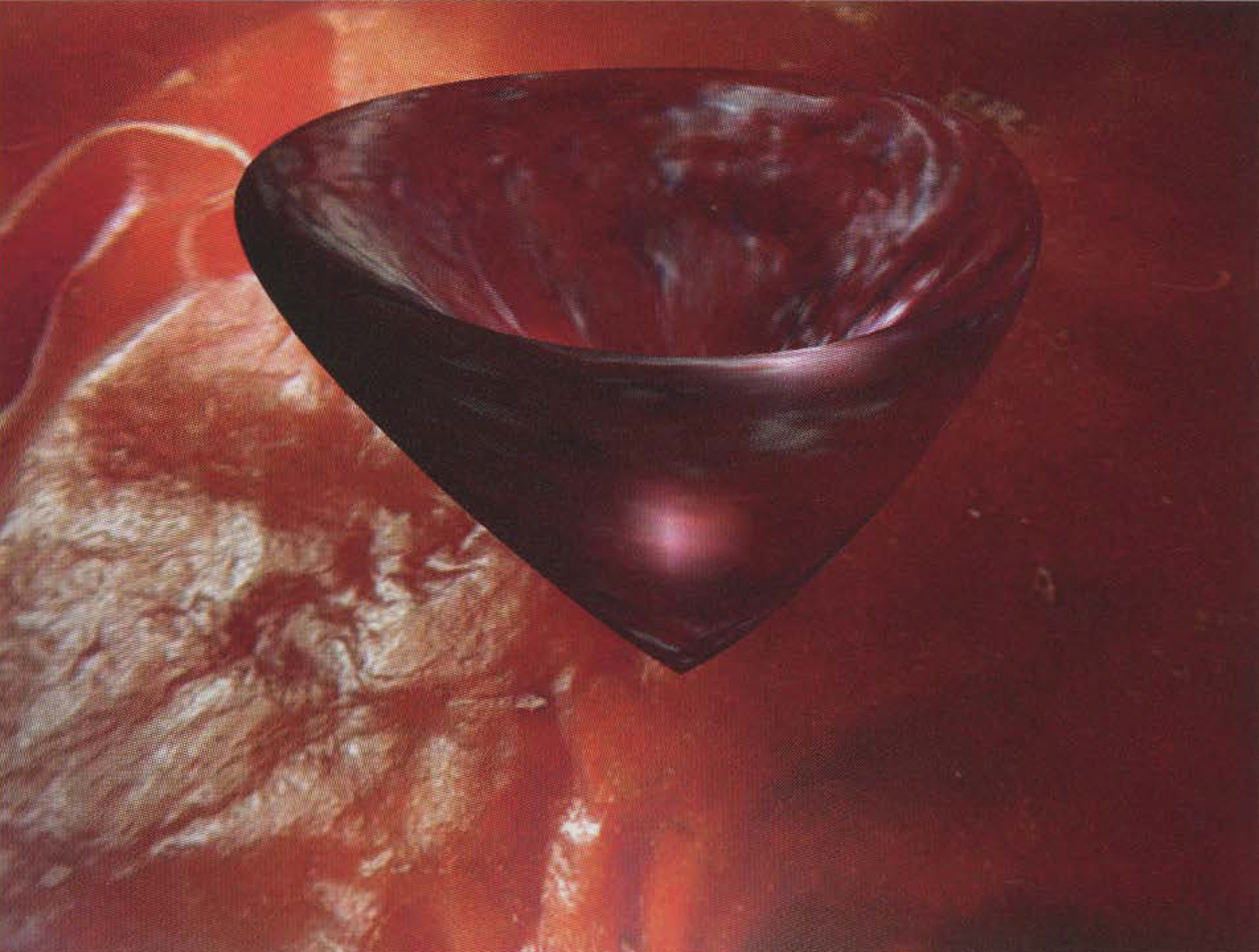Anthony Head: Metamorphosis
Artist(s):
Title:
- Metamorphosis
Exhibition:
Creation Year:
- 2004
Category:
Artist Statement:
Six virtual biomorphic sculptures that entertain and intrigue the viewer by provoking instinctive reactions that encourage the desire to explore further. Moving away from mechanical (motor-based, mobile, and clockwork) kinetic sculpture, the series develops kinetic rhythms and dynamism within virtual biomorphic sculptures. Metamorphosis explores form, space, motion, material, and sound, and how these combine to affect how people perceive and believe what they see. It is the combination of these elements that make up the material of the object. Material defines how the object looks, moves, and feels to the observer. Each of the six sculptures morphs between two alternate states, in different ways, due to their differing physical properties. Each movement emits a sound that reinforces the real-life credibility of these imaginary creations. The motion or rhythm of the series is bipolar by nature, with alternating forms dependent on time, ranging from almost pendulum-like regularity to sporadic intermittent pulses. The pause between the metamorphoses can lead to a sense of anticipation, and the lack of regularity keeps the viewer guessing. This work introduces a new medium, “digital clay,” which can bring a traditionally static art form to life through programmable physical properties. Consciously and subconsciously, motion and material are combined to form a conclusion as to what the sculpture is. Viewers try to categorise what they see. The clues are in the colours, movements, and sounds of the objects. You don’t have to make a decision as to what the object is, but you get a real feeling for what the object is about. The sculptures are not abstractions of human, animal, or organic forms, but creations of geometric origin; however, they have the essence of the organic, inorganic, and mechanical. The mix of the surreal with the essence of real substances is reassuringly familiar, but it challenges the audience’s perception. These sculptures cannot be physically touched, yet they prompt individual emotional response. It is this response that makes the sculptures believable to the observer.
Technical Information:
Metamorphosis consists of one basic form: a sphere. The sphere, in 3D computer graphics terms, is actually a many-sided shape, a polyhedron. The Metamorphosis sphere consists of about 2,000 sides. There are six different sculptures created from this one sphere that has been mathematically distorted. Combinations of equations with varying parameters were used to alter the positions of the points (vertices) that the sides connect to.
Each of the six sculptures, in fact, has two different forms, and they alternate between these two states, according to timed triggers. As well as different positions, each vertex has the physical properties of friction and elasticity. Together, these force the shape to oscillate between its two states. The sculptures with greater friction move slowly, as if viscous in material, and the forms with greater elasticity
swing wildly around, as if they are full of energy.
The physical properties and vertex manipulation are also combined with graphical representation and sound. The graphics are abstract in nature, like the sculptures. and demonstrate how the colour and texture affect the viewer’s perception of each sculpture’s physical properties. They are created to reinforce the forms. Sound is used, too, to strengthen the feel of the sculptures
The physicality of the scupltures is explored using your body as a control device. Moving your arms allows you to look around and inside them. Because they are reactive objects, you can interact by punching dents into them. How they react will depend on the physical settings that are materially inherent in the sculptures. They might spring back or slowly reshape themselves. You might even consider these sculptures to be living.





